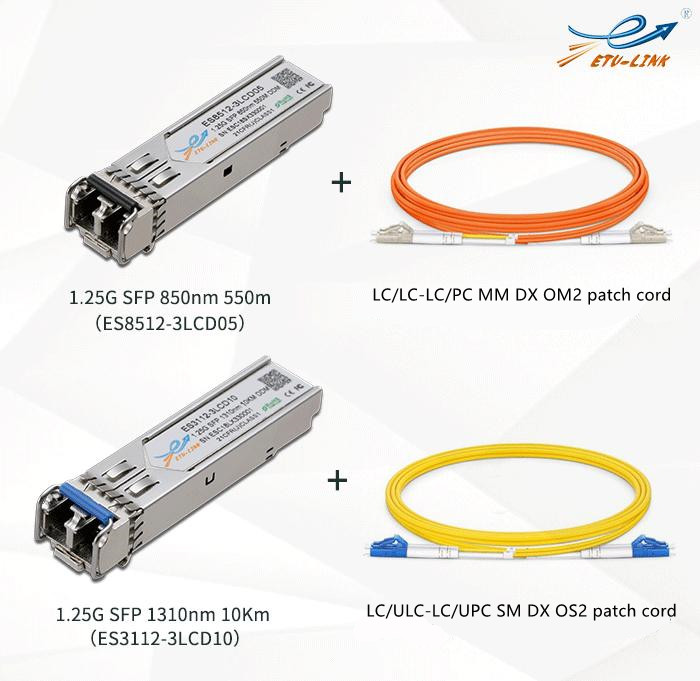
Difference and connection scheme between access layer switch and aggregation layer switch
In this blog, ETU-LINK will introduce the selection and connection scheme of lower access layer switch and aggregation layer switch. In the three-tier architecture, the role of the access layer is mainly to connect end users to the network. The access layer switch is the equipment of the switching layer. Because the access layer switch needs to connect more end users, the price of the access layer switch is relatively low and has high-density ports.
When selecting a switch, we need to consider the backplane bandwidth and packet forwarding rate (port throughput) of the switch. The calculation method of backplane bandwidth is port number * port speed * 2 = backplane bandwidth, that is, a Gigabit switch with 24 ports haas a backplane bandwidth of 48Gbps.
The second thing to consider is the packet forwarding rate, also known as port throughput. The higher the throughput, the stronger the data forwarding capacity of the switch. This is directly proportional to the number of ports and transmission rate of the switch. The packet forwarding rate of one Gigabit port is 1.488Mpps, and that of one 100m port is 0.1488Mpps.
To sum up, when selecting a switch, we need to select the switch with corresponding parameters according to the purpose of the terminal. We can take the digital monitoring system as an example. At present, the network adopts dynamic coding, and the peak value of 720P network camera code stream may exceed 4M bandwidth, so the bandwidth required for a camera is 4m. In addition, the actual bandwidth of the switch is 50% - 70% of the theoretical value, so the actual bandwidth of a 100m port is 50M-70M. Therefore, it is recommended to connect 12 cameras to a 100M access switch.
After talking about the access layer switches, let's learn about the lower aggregation layer switch. Compared with the access layer switch, the aggregation layer switch has stronger performance, higher port rate, fewer ports and higher packet forwarding rate. The aggregation layer switch is the aggregation point of multiple access layer switches. It is used to export the access nodes uniformly, and also do forwarding and routing. It must be able to handle all traffic from access layer devices and provide uplink to the core layer.
Next, let's understand the connection scheme between the lower convergence layer switch and the access layer switch. We take the interconnection of Gigabit switch and 100M switch as an example. We can connect the uplink port of 100M switch to the downlink port of Gigabit switch. At this time, we need to consider what product is more suitable for interconnection? In general, the access layer switch is closer to the user end, so sometimes it is relatively far away from the aggregation layer switch. At this time, we can use Gigabit multimode optical module or Gigabit single-mode optical module with optical fiber patch cord.
The transmission distance of the Gigabit multimode optical module is 550 meters, which needs to be connected with the multimode OM2 optical fiber patch cord. The transmission distance of the Gigabit single-mode optical module starts at 2 kilometers and can be transmitted up to 160 kilometers. We can select the corresponding products according to the actual needs.

The above is the introduction to the selection and connection scheme of access layer / aggregation layer switches. ETU-LINK can provide you with various optical interconnection product solutions. Later, you will share more switch interconnection solutions.
Categories
New Blog
Tags
© Copyright: 2025 ETU-Link Technology CO ., LTD All Rights Reserved.

IPv6 network supported
Friendly Links:
易天官网